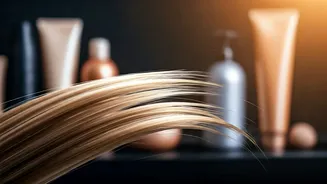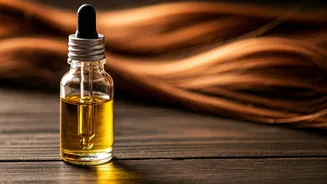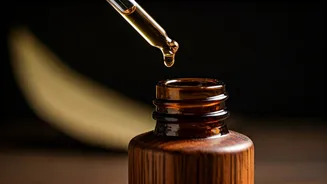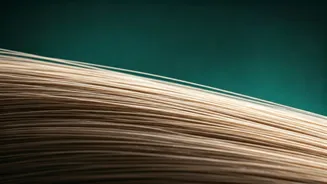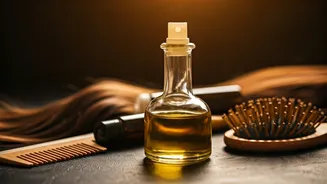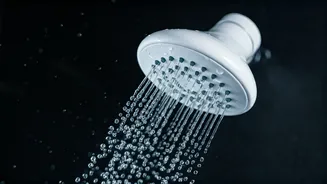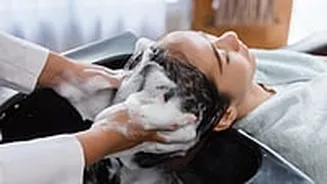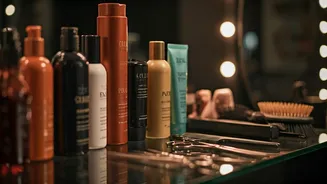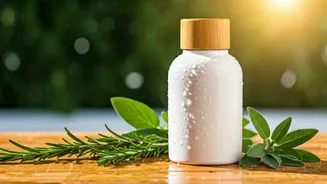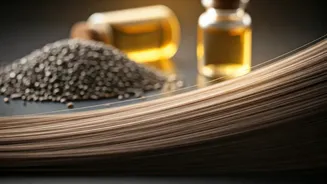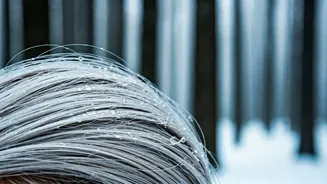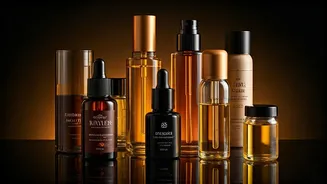Hair Type Basics
Understanding your hair type is the cornerstone of effective hair care. Hair types are generally categorized into four main groups: straight (Type 1),
wavy (Type 2), curly (Type 3), and coily (Type 4). Within each category, there are sub-types that further define the hair's texture, thickness, and porosity. Type 1 hair is straight with no curl pattern, often appearing oily due to the ease of sebum travel from the scalp. Type 2 hair is wavy, ranging from loose waves to more defined S-shaped waves; these types are prone to frizz and require products that define wave patterns. Type 3 hair is curly, varying from loose curls to tight corkscrews, requiring moisture-rich products to prevent dryness and breakage. Finally, Type 4 hair is coily, characterized by tight, springy coils; it is the most fragile hair type, often prone to dryness, requiring significant moisture and gentle handling. Recognizing your specific hair type will guide you in selecting the appropriate products and techniques, making your hair care journey more effective and enjoyable.
Essential Hair Care Products
The right products are pivotal in achieving and sustaining healthy hair. Shampoo is your first line of defense, designed to cleanse the scalp and hair, removing dirt, oil, and product buildup. Opt for shampoos tailored to your hair type: sulfate-free for dry or color-treated hair, clarifying shampoos for occasional deep cleaning, and volumizing shampoos for fine hair. Conditioners are essential to replenish moisture and smooth the hair cuticle. Choose conditioners that match your hair's needs: lightweight conditioners for fine hair, rich conditioners for coarse or dry hair, and leave-in conditioners for extra hydration. Hair masks are deep-conditioning treatments that provide intense moisture and repair. Use them once or twice a week, depending on your hair's condition. Serums and oils can add shine, reduce frizz, and protect hair from heat damage. Look for serums with silicones for heat protection or oils like argan or jojoba for added moisture and shine. When selecting products, always consider your hair type and any specific concerns like color treatment, dryness, or damage to ensure the best results.
Effective Hair Washing Techniques
How you wash your hair impacts its health and appearance. Begin by thoroughly wetting your hair with warm water; this opens the hair cuticles, allowing for better product absorption. Apply shampoo to your scalp and gently massage it in circular motions; this promotes blood circulation and effectively cleanses. Rinse the shampoo completely; any residue can weigh your hair down. Apply conditioner from mid-shaft to ends, avoiding the scalp to prevent oil buildup. Leave the conditioner on for the recommended time, usually a few minutes, allowing it to penetrate the hair. Rinse the conditioner thoroughly with cool water; this helps seal the cuticles, adding shine. Avoid overwashing; this can strip your hair of its natural oils, leading to dryness. The frequency of washing depends on your hair type and lifestyle, but generally, washing every other day or every few days is sufficient. Lastly, using a microfiber towel to gently pat your hair dry, rather than rubbing it vigorously, can minimize breakage and frizz. These techniques, when followed consistently, can significantly contribute to healthier, more manageable hair.
Healthy Styling Practices
Styling your hair should not compromise its health; consider these practices. Heat styling tools, such as hair dryers, straighteners, and curling irons, can cause significant damage if used improperly. Always use a heat protectant product before applying heat. Set the heat setting to the lowest effective level; excessive heat can dry out and damage the hair. Avoid pulling your hair too tightly when styling; tight hairstyles, such as tight ponytails and braids, can cause breakage and hair loss. Opt for looser styles that do not put excessive strain on your hair. Use hair-friendly accessories; choose smooth scrunchies, instead of rubber bands, to minimize breakage. Regularly trimming your hair is crucial; it removes split ends and prevents further damage from traveling up the hair shaft. Aim for trims every 6-8 weeks to maintain healthy hair. Prioritize hydration and nourishment. Drinking plenty of water and eating a balanced diet rich in vitamins and minerals will support hair health from the inside out. These styling practices, when combined, will help you achieve stylish looks while preserving the health and vitality of your hair.
Addressing Common Hair Issues
Various hair issues are common, and addressing them requires specific strategies. Dryness is a frequent concern, often caused by lack of moisture. Combat it with moisturizing shampoos, conditioners, and hair masks. Use leave-in conditioners and hair oils to lock in moisture and prevent further dehydration. Frizz is another prevalent issue, often caused by humidity and dry hair. Use anti-frizz products, such as serums and smoothing creams, and avoid excessive heat styling. For color-treated hair, consider using color-safe shampoos and conditioners that help retain the color and prevent fading. Deep conditioning treatments can help to repair damage. Split ends are a clear sign of damage; the only effective solution is regular trims. Prevent them by using gentle styling techniques, minimizing heat styling, and using protective products. For hair loss, consult a dermatologist to determine the cause. Potential treatments range from over-the-counter products to prescription medications, depending on the cause. Addressing these common issues promptly and effectively is essential for maintaining healthy, vibrant hair and overall confidence in your hair's appearance and condition.
